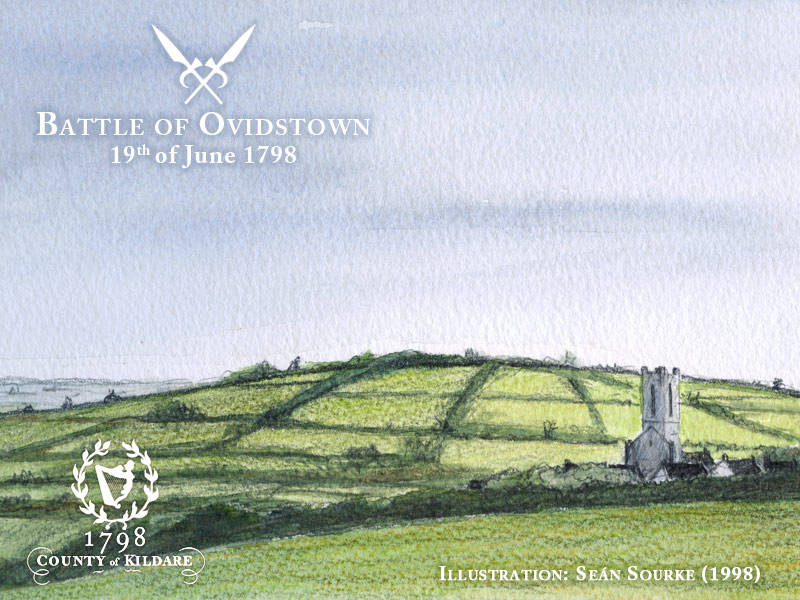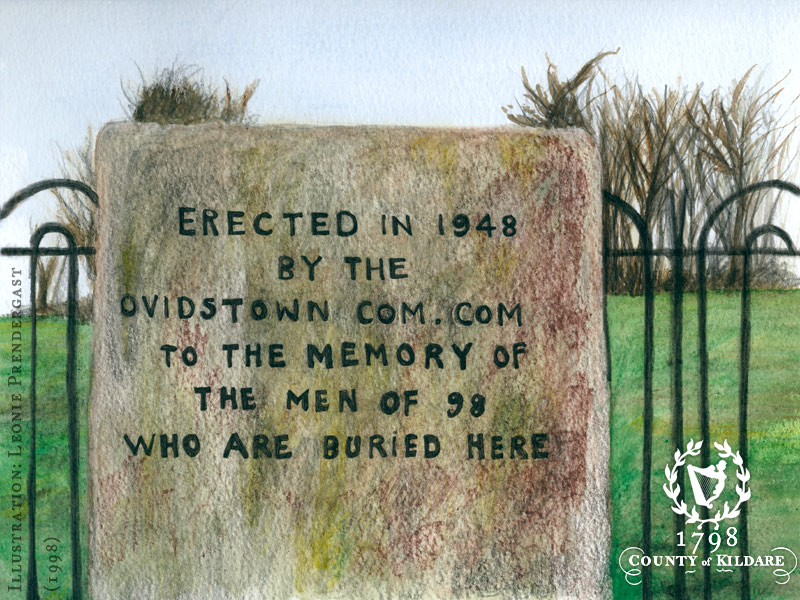Rebellion Towns & Villages

The Battle of Ovidstown
The most serious engagement fought by the rebel army under William Aylmer took place at Ovidstown on Tuesday the 19th of June.
Lieutenant Colonel Irwin, commander of the Trim Garrison, had marched from that town the previous night to engage the rebels at the head of around 400 men. Realising that a significant military force was descending upon them, Aylmer and John Doorly quickly arranged their army of around 4,000 men at the foot of Wiley’s Hill. Some of the rebels lined the hedges on both sides of the road and fired on Irwin’s advance guard. These were soon cleared by the infantry, but due to the unevenness of the ground and the enclosed areas on it, the cavalry and the 2 field pieces could not detach for some time.
Aylmer ordered his pikemen to attack the cannon positions, but they sought refuge behind a quick-set hedge. The cannon was turned upon them and the grape-shot, according to Doorly, cut the hedge “as if lopped off by a clipping shears”. The men began to leave the cover of the ditch only to be cut down. A number of Aylmer’s musketmen almost captured the cannon position killing some of the troops, but they were routed by the cavalry. The main body of rebel gunmen (about 200) stood fast but their situation was hopeless.
The battle turned into a rout as the cavalry charged down the fleeing rebels, many of whom escaped into the bogs nearby. More than 200 rebels were killed while the troops lost 2 officers, 2 sergeants and 20 privates. The reality of their precarious position was all too apparent. Aylmer and his officers began to seriously think in terms of a negotiated surrender.

Rebellion Towns & Villages
Naas | Ballymore | Old Kilcullen | Knockaulin | Narraghmore | Ballitore | Athy | Monasterevin | Kildare Town | Rathangan | Gibbet Rath | Clane | Prosperous | Timahoe | Ovidstown | Surrender
